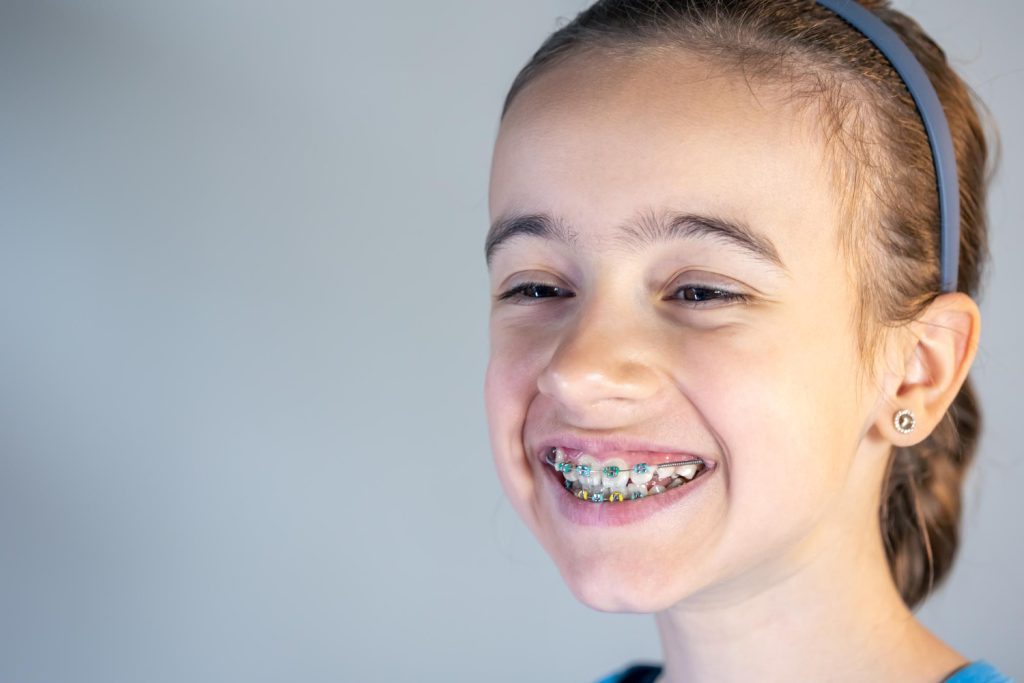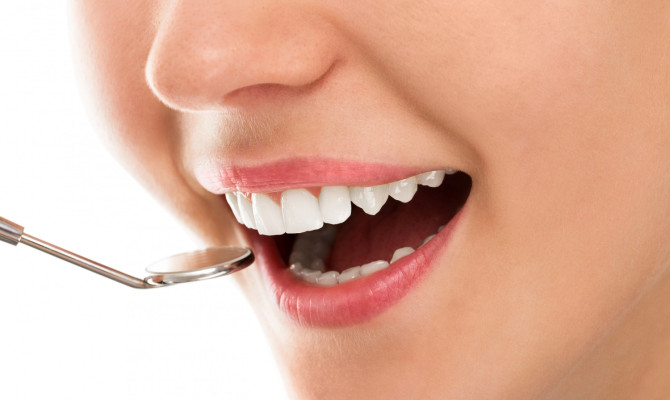Everything You Need To Know About Rubber Bands For Braces

- Dental braces
- 15 Sep 2023
Introduction
Rubber Bands for Dental Braces
Braces are a great orthodontic treatment option that has helped millions get straight smiles and better dental health. A critical feature of the braces is that, despite appearing less obvious, it is vital to use rubber bands. They are modest but powerful partners in addressing dental issues, also known as elastics. In this article, we’ll delve into rubber bands for braces, examining their function, variety, and potential impact on your treatment. We will review the numerous types of rubber bands used in orthodontics, how to wear and care for them properly, and the advantages of consistent, accurate use. 1 Introduction | Researched based study from National Library of Medicine

Importance
What does the Rubber Bands do for Braces?
Rubber bands are essential to the therapy by adding extra forces that help with jaw and tooth alignment. These tiny elastic bands may seem inconspicuous on the surface, but they have a significant role in helping you get the smile you want.
Here’s a closer look at how rubber bands function in a medical setting.
Applying controlled forces
- Orthodontists carefully position them to generate particular forces that facilitate the movement of the jaws and teeth by causing misalignments, filling gaps, and achieving a harmonic bite.
Guiding tooth movement
- They are frequently employed to direct the movement of specific teeth or sets of teeth.
- Orthodontists can manage the direction and speed of tooth movement by securing them to various places on the braces.
Correcting bites
- They are crucial in treating bite problems such as overbites (where the upper teeth protrude over the lower teeth) and under bites (where the lower teeth protrude over the upper teeth).
- They can progressively realign the bite by positioning elastic bands to align the movement of the upper and lower jaws.
Enhancing the benefits of an archwire
- They are essential parts of braces that press on teeth.
- In addition to increasing the effects of arch wires, rubber bands also help control tooth movement more precisely.
Achieving symmetry
- Rubber bands can be deliberately positioned to achieve symmetry and balance in the smile when teeth are unevenly spaced apart or one side of the mouth needs more correction.
Collaborative effect
- The patient must be active in the rubber band treatment to be effective.
- They ensure consistent force application and best progress when worn as instructed.
Gradual changes
- Gradual modifications are part of orthodontic treatment, including rubber bands.
- The forces they provide gradually urge teeth to move into the desired places.
- This method improves healthy tooth movement and reduces discomfort.
Following instructions
- It is essential to wear them according to the directions.
- Wearing them inconsistently or failing to wear them as directed can impede progress and lengthen the course of treatment.
They are dynamic instruments that assist other brace elements in moving teeth and jaws into the proper positions. Their thoughtful application, together with the skill of the dentists and the patient’s dedication, produces the transforming effects that result in a confident and radiant smile. 2 Importance | Researched based study from American Association of Orthodontists ,6 Importance | Researched based study from Science Direct
Types
Types of Rubber Bands for Braces
Depending on efficiency
They are employed in orthodontic treatment and can be divided into the following categories according to how they work in the braces system:
Inter-arch rubber bands
- These are the most popular kinds and are applied to bite problems.
- By directing the alignment of the teeth, they connect the upper and lower jaw and aid in the correction of overbites, underbites, and crossbites.
Intra-arch bands
- They are frequently used to improve the alignment of certain teeth within the same arch.
- They apply pressure to correct particular teeth, assisting in their optimum alignment.
Elastomeric chains
- Elastomeric chains are flexible chains formed of material resembling rubber but not conventional rubber bands.
- By progressively pulling the teeth closer together, they are utilized to reduce gaps between teeth.3 Types | Researched based study from Research Gate
Depending on size
Small bands
- They are frequently utilized for minor alignment difficulties, lesser forces, and finer adjustments.
Medium bands
- These have a modest amount of force and are frequently used to treat various alignment and biting problems.
Large bands
- These offer potent forces and are frequently utilized for necessary adjustments, such as moving jaws or directing large tooth movements.3 Types | Researched based study from Research Gate
Depending on position
Vertical bands
- They are positioned vertically to regulate their movements and bite connection, joining the upper and lower teeth.
Horizontal bands
- When applied horizontally, these bands help move teeth laterally for better alignment.
Diagonal bands
- They are attached diagonally to address complex problems that call for a combination of vertical and horizontal forces.
Triangle configuration
- Three rubber bands can be placed in a triangle to repair the individual bite faults and direct teeth into their proper locations.3 Types | Researched based study from Research Gate
Procedure
Placement of Rubber Bands procedure
Initial consultation with an orthodontist
- It is imperative to first check with your dentist before beginning your authority treatment with rubber bands.
- To decide whether rubber bands are required for your therapy, your bite problems and tooth alignment will be evaluated.
- If it is advised, they will go through their procedure in your treatment plan and go over the anticipated advantages.
- You will be given instructions, the correct type and size for your requirements, and information on when and how to begin wearing them. 2 Importance | Researched based study from American Association of Orthodontists
Placing and removing
Initially, it could seem not very safe, but with time and practice, it will become a regular component of your orthodontic care:
Placement
- Before touching the rubber bands, please wash your hands to ensure they are clean.
- Use a mirror and adequate light to help in your vision.
- Stretch and book it onto the little hooks on the braces bracket using clean fingers.
- Be careful to adhere to the configuration that your dentist has prescribed (vertical, horizontal, diagonal).
Removal
- Before attempting to remove the rubber band, wash your hands.
- If necessary, carefully remove them from the bracket using a mirror.
- Discard used bands at the proper disposal. When reapplying, wear a new set if you’re using disposable ones.
Side Effects

Side Effects & Disadvantages of using Rubber Bands
Pain or discomfort
- It’s normal to feel uncomfortable, sore, or slightly painful when using it for the first time.
- As your mouth becomes used to the pressure, this should go away, but if it continues or gets severe, see your dentist.
Sores and irritation
- Occasionally, it can irritate or lead to ulcers on the inside cheeks or lips. By acting as a barrier, orthodontic wax can assist in resolving this problem.
Breakage
- It might break, especially if it is overused or overextended.
- Carry extra balance so that you can quickly replace them if they fail.
Inconsistent wear
- If they are not worn as directed, treatment times may be prolonged, and progress may be slowed.
An allergic reaction
- Rarely some individuals may react negatively to the material. Consult your dentist if you experience any unusual irritation or discomfort.
Improper placement
- Proper tooth movement, bite misalignment, or even damage to your braces might occur from correctly positioning rubber bands on the hooks or brackets.
Gum issues
- If good dental hygiene isn’t maintained, they might retain food particles and bacteria, which could result in gum problems.
Speech changes
- Some persons may have slight speech alterations at the start of use.
- Over time, your mouth will adjust, but speaking regularly will hasten the process.
Dependence on rubber bands
- In certain instances, patients could become overly dependent on them, resulting in weak bite muscles and discomfort in the jaw.
- It’s critical to utilize them exactly as instructed.
Non-compliance
- Follow the dentist’s advice to ensure your treatment does not take longer and has less-than-ideal results. 7 Side Effects | Researched based study from Science Direct , 8 Side Effects | Researched based study from National Library of Medicine
Tips
Tips for adequately wearing Rubber Bands
- Proper wear schedule
- Following the suggested routine is essential
- The key is consistency
Following your dentist’s recommendations, wear them as directed. This could entail wearing them constantly, excluding when you eat and clean your teeth or during certain hours.
Adjust as necessary
- According to their instructions, which are often every 12 hours, replace them as needed.
Avoid skipping days
- It can slow down the course of your therapy if you skip days without wearing your bands.
- To get the best outcomes, keep to a schedule
Managing discomfort
- It’s normal to feel some discomfort while wearing them, but the following advice can help to reduce it:
Start slowly
- Start with shorter wear times to help your tongue get used to the additional pressure.
- Increase the duration gradually as you feel more at ease.
Over-the-counter pain relief
- Over-the-counter painkillers can assist if you only feel slight discomfort. For advice, speak with your chemist or orthodontist.
Wax for braces
- Orthodontic wax can cover the brackets if they irritate your mouth or leave painful places.
Eat only soft foods.
- Stick to milder foods that won’t put too much pressure on your teeth and braces throughout the initial appointment.
Oral hygiene habits
Maintaining proper dental hygiene is crucial:
After meals, brush your teeth
- Your braces and bands may become entangled with food particles. After each meal, brush your teeth and rinse your mouth to avoid food debris buildup.
Regularly floss
- Use floss threads or interdental brushes to clean between your teeth and the area around your braces.
- It keeps your gums healthy and avoids problems brought on by food that has become trapped.
Remember that soreness is brief and frequently indicates that your treatment is working. Do not hesitate to ask your orthodontist for advice if the discomfort worsens.
Common Mistakes
Common mistakes to avoid while using rubber bands for braces
Let’s look at some typical errors to avoid when utilizing them with braces:
Skipping wear time
- Consistent use is one of the most essential requirements for practical rubber band usage. Avoid making the following wear-time mistakes:
- Consistent use is one of the most essential requirements for practical rubber band usage. Avoid making the following wear-time mistakes:
- Your treatment progress can be severely slowed if you skip days without wearing your bands as directed. For the intended effects, consistency is crucial.
Longer breaks
- Taking longer pauses than advised will counteract your progress and lengthen the time you need to complete your therapy.
Irregular hours
- If your dentist recommends wearing bands for a set number of hours daily, strictly follow their instructions.
Pitfall of double elastics
- If done incorrectly, using double elastics—adding two rubber bands to the same hooks—can result in issues like excessive force.
Excessive force
- Double elastics may put too much pressure on brackets and teeth, resulting in discomfort, misalignment, or even damage to your braces.
- An incorrect bite can be caused by utilizing double elastics improperly, which can be uncomfortable and slow the course of your treatment. 7 Common Mistakes | Researched based study from Science Direct ,8 Common Mistakes | Researched based study from National Library of Medicine
Hints for avoiding errors
Set a reminder
- Set alarms, make phone calls, or create written timetables to track when to put your bands in or change them.
Stay organized
- Keep additional rubber bands in a handy location, like your bag or pocket, to ensure you always have replacements.
Request support
- Ask your orthodontist if you have any concerns regarding the wear schedule or queries concerning the rubber band employed.
Don’t experiment
- Follow your dentist’s instructions in the letter. Refrain from changing band configurations without informing them.
Remember that your orthodontist is the most significant source of advice on using it. By avoiding these typical blunders, you may ensure that your treatment goes quickly and produces the desired result—a stunning smile. 9 Common Mistakes | Researched based study from National Library of Medicine
Alternatives
Alternatives to Elastic Braces
Clear aligners
- They are a well-liked substitute for braces. These are clear plastic trays specially made to realign teeth progressively.
- They may be removed for eating, brushing, and flossing and are undetectable. 4 Alternatives | Researched based study from National Library of Medicine
Lingual braces
- While they resemble conventional ones, they are less noticeable since they are positioned on the back surface of the teeth.
- They can produce outcomes comparable to traditional clothing but look more understated.
Braces with self-ligation
- Using these specialized brackets, the arch wire can be placed without using elastic. Compared to the usual ones, they might include fewer conflicts and appointments.
- Expanders can sometimes be used to treat the upper or lower jaw to address problems like crowding. Growing kids frequently use these gadgets.
Veneers
- They are a cosmetic choice that can make teeth look better without requiring major orthodontic work.
- They are attached to the front surface and are made of thin shells.5 Alternatives | Researched based study from National Library of Medicine
Retainers
- They are frequently used to keep the new alignment after orthodontic treatment. Additionally, they can be utilized for little adjustments.
Surgery
- Orthognathic surgery may be advised in cases of significant misalignment or jaw discrepancies. This entails combining medical care with surgical procedures.
FAQs
FAQs about Rubber Bands for Braces
How long do you wear rubber bands for braces?
- The timeframe varies greatly depending on each patient’s treatment demands and strategy.
- Patients often wear it for a few months to a year, though this can change depending on how complex the situation is.
How fast do braces move teeth?
- Rubber bands move teeth at varying rates based on several variables. Within a few weeks of regular wear, patients may occasionally notice changes in the location of their teeth.
- However, it usually takes many months to a year for significant alignment changes to be apparent. Longer times may be necessary in complex circumstances.
Can I sleep with elastics on my braces?
- If your dentist has given you the go-ahead, you can typically sleep with elastics on your braces. Wearing them while you sleep is effective because it enables continuous force application to assist tooth movement even while sleeping.
Should I wear my rubber bands every day?
- You should wear them daily as part of your treatment plan unless your dentist gives you other instructions.
- Some patients may be instructed to wear them all the time, including when sleeping and eating, while others may only be required to do so during specific hours.
Can I change my rubber bands?
- While it’s crucial to follow the guidelines, making changes with the dentist’s approval could result in correct modifications or unwanted repercussions.
- It is best to speak with your doctor first if you have any concerns or need to change them.
What if I miss a day of wearing rubber bands?
- If you skip a day, it is crucial to start wearing them again as soon as possible.
- To catch up, do not double up on them since this may put undue strain on your teeth. Talk to your dentist about a remedy if you frequently miss wear time.
Can I remove rubber bands on special occasions?
- For rare events, it might be possible to remove them. However, it is best first to consult your dentist. They can advise you on the best course of action and how to reduce setbacks in your treatment.
The Bottom Line
Rubber Bands for Braces-Things to keep in mind
During therapy, rubber bands for braces are essential in moving teeth and jaws into the ideal positions. These compact yet practical instruments deliver control forces that help create a perfectly straight smile. Even though discomfort and difficulties could occur, adhering to the instructions and getting professional assistance, when necessary, will make your orthodontic journey successful. Remember that every patient’s treatment plan is distinct, and by following the advice, you are moving towards getting the confident smile you have been striving for.
Any feedback on this article?
 This Articles content was accurate
This Articles content was accurate Very Informative Article
Very Informative Article I have a question or a comment
I have a question or a comment
 This article contains inaccurate content
This article contains inaccurate content This article was not helpful
This article was not helpful I have a question or a comment
I have a question or a comment
We appreciate your helpful feedback!
Checkout our social pages
References
-
National Library of Medicine
Introduction
-
American Association of Orthodontists
Importance | Procedure
-
Research Gate
Types
-
National Library of Medicine
Alternatives
-
National Library of Medicine
Alternatives
-
Science Direct
Importance
-
Science Direct
Side effects | Common mistakes
-
National Library of Medicine
Side effects | Common mistakes
-
National Library of Medicine
Common mistakes





































